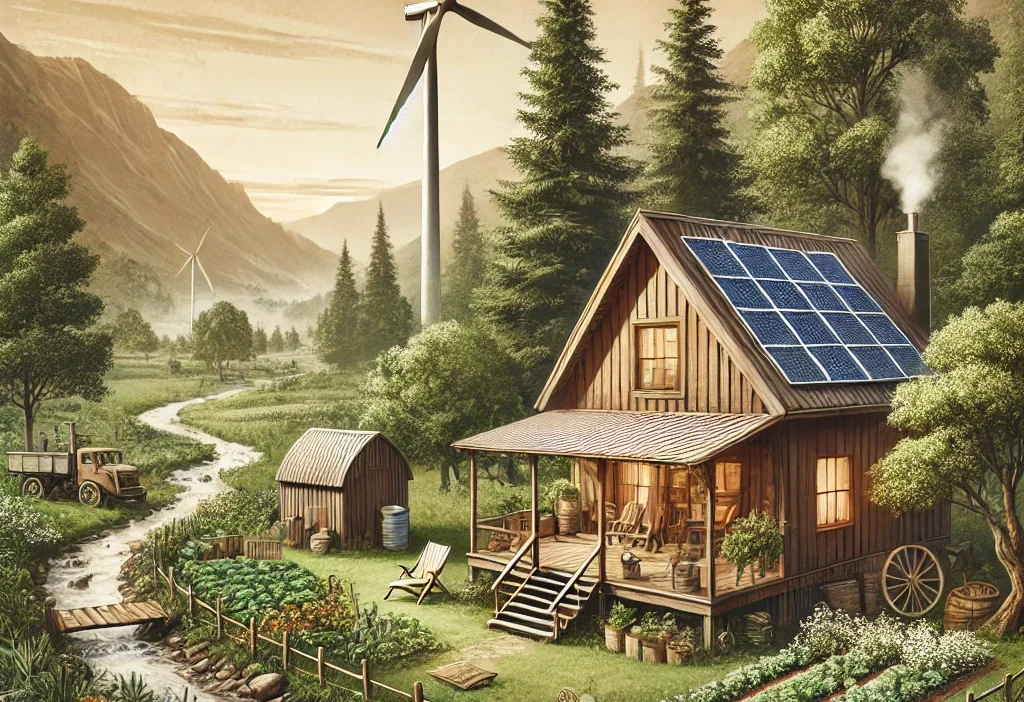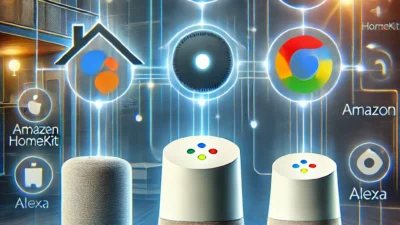Introduction to Smart Home Sustainability
Smart home sustainability refers to the integration of advanced technology in residential environments to enhance energy efficiency, minimize waste, and promote sustainable living practices. This concept emphasizes the use of connected devices that optimize the consumption of energy and resources, resulting in a more environmentally conscious lifestyle. These smart technologies include energy-efficient appliances, home automation systems, and renewable energy solutions, all of which are designed to help homeowners monitor and control their daily energy use effectively.
The significance of smart home sustainability becomes particularly relevant in the context of off-grid living. Off-grid living involves residing in a self-sufficient manner, independent of municipal utilities. It allows individuals or families to produce their own power, source water, manage waste, and grow food, thereby reducing their reliance on non-renewable resources. Incorporating smart home technologies into off-grid systems can greatly enhance the efficiency and effectiveness of these self-sufficient lifestyles.
In adopting smart home sustainability practices, residents are able to track their energy production and consumption in real time, thus making informed decisions about their usage. For instance, smart thermostats can optimize heating and cooling needs based on the time of day and occupancy, while smart lighting systems can adjust usage based on natural light availability. Such advancements not only support reduced energy demand but also contribute to overall lower carbon footprints.
Ultimately, the blending of smart home technologies with off-grid living represents a strategic approach to achieving greater self-sufficiency. It fosters a sustainable lifestyle by encouraging reduced resource consumption, waste production, and ecological impact. Embracing these innovative practices can lead to a more harmonious relationship with our environment, while also enhancing the quality of life for residents seeking to live sustainably.
Technologies for Off-Grid Smart Homes
As individuals seek to embrace sustainable living, the integration of advanced technologies within off-grid smart homes has gained traction. These homes utilize renewable energy sources, allowing residents to significantly reduce their carbon footprint while maintaining modern conveniences. Key technologies that enable smart home sustainability include solar panels, wind turbines, and energy storage systems.
Solar panels are a cornerstone of off-grid living, converting sunlight into electricity. This renewable energy solution is efficient and scalable, making it suitable for various residential settings. Complementing solar energy, wind turbines harness the power of the wind to generate electricity. Together, these renewable sources can provide a consistent energy supply, minimizing reliance on traditional grid power.
Energy storage systems, such as batteries, play a crucial role in managing the energy produced by solar panels and wind turbines. They store excess energy generated during peak production times for use during periods of low generation, ensuring a continuous power supply. The integration of these technologies creates a robust framework for energy management and consumption.
In addition to energy generation and storage, smart appliances and Internet of Things (IoT) devices contribute significantly to the efficiency of off-grid smart homes. Smart appliances can monitor their own energy usage and adjust operations based on available energy resources. This feature minimizes waste and enhances sustainability efforts. IoT devices facilitate seamless communication among various systems within the home, allowing for real-time adjustments based on consumption patterns.
Home automation systems further refine this approach by enabling homeowners to manage their energy usage proactively. By utilizing technology to synchronize energy consumption with production, residents can optimize their electricity use, fostering a more sustainable lifestyle. The synergy of these technologies creates a self-sufficient ecosystem that embodies the principles of smart home sustainability. As advancements continue, off-grid living becomes not just a theoretical option but a practical reality for those seeking eco-friendly solutions.
Designing Your Off-Grid Smart Home
Designing an off-grid smart home requires careful consideration of multiple factors that contribute to both environmental sustainability and functional efficiency. One of the primary steps in this process is site selection, which involves analyzing factors such as sunlight exposure, wind patterns, and local climate conditions. A location that receives ample natural light is crucial for optimizing passive solar design, a key element in minimizing reliance on artificial heating and lighting.
Passive solar design incorporates strategic placements of windows, overhangs, and thermal mass materials to efficiently absorb, store, and distribute solar energy within the home. By maximizing passive solar principles, homeowners can create a comfortable living environment while reducing energy needs. Additionally, space optimization plays an important role in designing an energy-efficient structure. Prioritizing open floor plans and multifunctional spaces allows for efficient heating and cooling, ultimately leading to decreased energy consumption.
When selecting materials for your off-grid smart home, it is prudent to choose eco-friendly options. Recycled, reclaimed, or sustainably sourced materials not only minimize environmental impact but also contribute to the overall aesthetic and durability of the building. Wood, bamboo, and rammed earth are examples of sustainable materials that can provide excellent insulation and structural integrity.
Integrating smart systems into your home design is essential for enhancing functionality while maintaining sustainability. Consider incorporating smart thermostats, energy monitoring systems, and automated lighting to optimize energy usage dynamically. These technologies can help you track your consumption patterns and adjust accordingly to maximize energy efficiency.
It is crucial to develop a layout that accommodates renewable energy sources, such as solar panels or wind turbines, ensuring they are seamlessly integrated into the overall architecture. By thoughtfully combining site selection, passive solar strategies, materials, and smart technology, you can create a living space that surpasses traditional energy systems while embodying the principles of sustainability.
Challenges and Solutions in Off-Grid Smart Living
Implementing smart home technology in an off-grid environment presents unique challenges that require comprehensive planning and innovative solutions. One of the primary obstacles faced by individuals venturing into off-grid smart living is resource management. Energy supply becomes a critical factor, especially when dependent on renewable energy sources like solar or wind. Ensuring an adequate and continuous power supply for smart devices demands efficient energy allocation, where monitoring consumption patterns becomes essential. Inadequate energy can lead to interruptions in service or limit the functionality of essential devices.
Another significant challenge is the technology limitations inherent in off-grid settings. Many smart home technologies rely on stable internet connections, which can be difficult to achieve in remote locations. Slow or unreliable internet can hinder the effectiveness of smart home systems, from security cameras to smart thermostats, making it increasingly important to assess connectivity options ahead of time. Furthermore, certain smart devices may require continuous software updates or a reliable connection to function optimally, posing additional difficulties for off-grid users.
Maintenance concerns also play a pivotal role in the sustainability of off-grid smart living. The absence of conventional service options means individuals must be self-sufficient and knowledgeable about repairs and maintenance tasks. Investing in user-friendly technology and robust systems that require minimal upkeep can mitigate these concerns. Transitioning to community resources can also provide assistance and shared knowledge for troubleshooting common issues.
To overcome these challenges effectively, proper planning is indispensable. Individuals should carefully consider their energy needs and explore options such as battery storage to ensure a reliable power supply. Engaging with community networks can provide access to shared resources and expertise, enhancing problem-solving capabilities. Furthermore, investing in ongoing technological improvements enables individuals to stay ahead of maintenance issues and adapt their systems as advancements emerge. By addressing these challenges with deliberate strategies, achieving success in off-grid smart living becomes a feasible objective.



